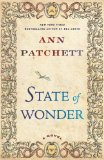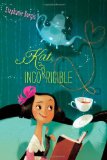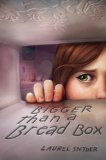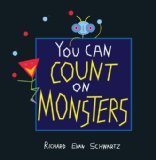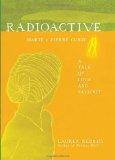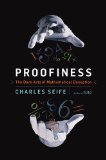Review of State of Wonder, by Ann Patchett
by Ann Patchett
Harper, 2011. 353 pages.
Starred Review
I got to hear Ann Patchett read from this book almost a full year ago, when she spoke at the Fall for the Book Festival at George Mason University in Fairfax, sponsored by the Fairfax Library Foundation. It’s been a long time to wait for it to come out! Though it didn’t exactly make me excited to read the book — the passage she read involved an Anaconda on a small boat in the Amazon, and it was portrayed all too vividly. But I did know from that reading that the book would be well-written, vividly described, and definitely exciting!
I was right about all of that. Her writing is so evocative. She deeply pulls you into the lives of her characters — who are definitely individuals, with very particular, very unique lives. But it doesn’t take long reading to feel like you know these people, to completely believe that their lives and complex histories are exactly as described.
The story is rather exotic, taking our character to a remote tribe in the Amazon jungle. The beginning sounds completely normal, but momentous:
“The news of Anders Eckman’s death came by way of Aerogram, a piece of bright blue airmail paper that served as both the stationery and, when folded over and sealed along the edges, the envelope. Who even knew they still made such things? This single sheet had traveled from Brazil to Minnesota to mark the passing of a man, a breath of tissue so insubstantial that only the stamp seemed to anchor it to this world. Mr. Fox had the letter in his hand when he came to the lab to tell Marina the news. When she saw him there at the door she smiled at him and in the light of that smile he faltered.”
Anders shared an office with Marina. They were doctors working for a pharmaceutical company. Anders had gone to Brazil to check on the progress of the elusive Dr. Swenson, developing a valuable miracle drug for their company, exploring the late-life pregnancies of a remote jungle tribe. He was supposed to hurry Dr. Swenson along and ask her to bring most of the work back to Minnesota.
But they got an aerogram that Anders died of a fever. They buried him there.
Naturally, that doesn’t satisfy anybody. So Marina goes to find out how he died and to check on the progress of the work while she’s at it. But Dr. Swenson’s work is so secret, no one even knows where she is, and the first step is to wait in a city outside the jungle until she comes in for supplies. What’s more, Marina has some baggage. Years ago, Dr. Swenson was her advisor in her medical residency. But Marina had an accident in performing a Cesarean section, and transferred out of obstetrics and gynecology to pharmacology. She, along with all the residents, idolized Dr. Swenson. But she understands that nothing but the work is important to Dr. Swenson. So she is not surprised when Dr. Swenson doesn’t even remember her.
And there’s so much more going on. I won’t tell any more, so you can enjoy discovering it all in the delightful way Ann Patchett gives it to you, as if you’re learning it from the people themselves. This book is so richly textured, with layers and layers of meaning.
The story is rather exotic, since it takes you to the Amazon. And, yes, Ann Patchett did go to the Amazon when researching this book. You can tell in details like the way an anaconda smells.
I see in my notes from her talk that she says that when writing “you have to know the characters first — like knowing people.” And her characters are indeed like real people, each with their own unique history and hang-ups and interests. You will be fascinated when these people you’ve come to know get plunged into extraordinary situations.
Find this review on Sonderbooks at: www.sonderbooks.com/Fiction/state_of_wonder.html
Disclosure: I am an Amazon Affiliate, and will earn a small percentage if you order a book on Amazon after clicking through from my site.
Source: This review is based on a library book from the Fairfax County Public Library.
